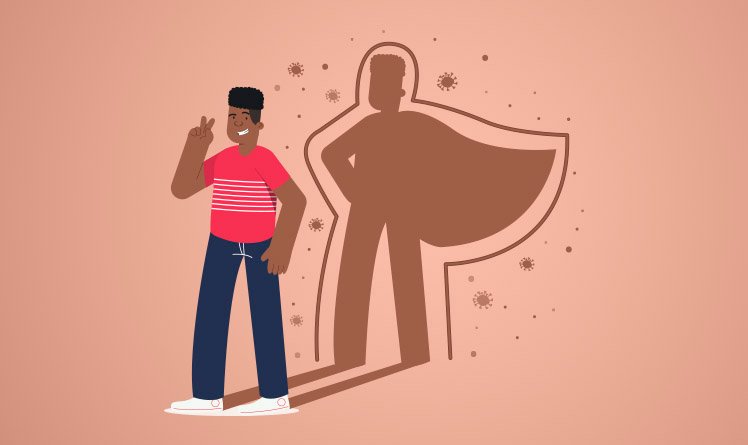Reframe limiting beliefs: how to reprogram your mind with NLP, Mindfulness, and Positive Psychology

|
Getting your Trinity Audio player ready...
|
Have you ever found yourself repeating behavior patterns that hold you back, even when you're trying to evolve? The feeling of being trapped in recurring negative thoughts, without knowing exactly why, is more common than it seems. And the turning point lies precisely in learning to reframe limiting beliefs. These ingrained ideas about who you are or what you deserve in life create a kind of invisible filter that distorts your perception and sabotages your choices. In this sense, they disguise themselves as absolute truths and prevent us from experiencing new things, from daring, from allowing ourselves to be who we truly are.
But what if there were a way to change this story from the inside out, without magic formulas, but with scientific basis and practical tools? That's exactly what we'll discuss in this article. Prepare to embark on a profound journey of transformation, integrating NLP, mindfulness, positive psychology, and neuroscience to unlock your mind and access your full potential.
Introduction: What are limiting beliefs and why do we need to reframe them?
Imagine carrying a suitcase full of rocks you don't even remember putting there. These rocks are the limiting beliefs we accumulate throughout life. Phrases like "I'm not good enough," "I'll never make it," or "I don't deserve to be happy" lurk in our thoughts and sabotage our choices. And the worst part: we don't even realize it.
Limiting beliefs These are beliefs we hold about ourselves, others, or the world that restrict our ability to act, grow, and achieve. In this way, they are invisible, but they shape our reality like a pair of sunglasses: they distort the light and what we see in life.
“Re-signifying limiting beliefs means reinterpreting past experiences from a new emotional perspective, replacing self-deprecating judgments with empowering lessons.”
Reframing these limiting beliefs is like changing your lens for a clearer one. You gain the freedom to act in a way that's more aligned with who you are and what you want to experience. And the best part: with tools like NLP, mindfulness and positive psychology, this process can be much more accessible and transformative than it seems at first glance.
The origin of limiting beliefs: how our mind creates its blocks
You weren't born believing you're incapable. In other words, beliefs are formed primarily in childhood. Above all, they originate from significant experiences, repeated speech, and emotional interpretations of events.
For example, a child who constantly hears "you don't know how to do that" may internalize this idea as a truth about their competence. Furthermore, even if they later become a skilled adult, that "voice" will still echo, guiding their actions.
Neuroscience explains that these beliefs become consolidated neural networks. Thus, the more an idea is repeated, the more it strengthens in the brain. It's like a path in the woods: the more you walk along it, the more worn it becomes. Therefore, reframing involves creating mental and emotional pathways.
“You begin to reframe a limiting belief when you stop reacting automatically to it and start questioning its origin and usefulness in the present.”
Reframing is not erasing: what it really means to change a belief
Reframing limiting beliefs isn't about forgetting what you experienced or pretending nothing happened. Above all, it's about reinterpreting and giving new meaning to that experience, no longer as a condemnation, but as a source of learning and growth.
When you change the meaning of a memory or thought, you change your emotional relationship with it. Simultaneously, this generates a new internal and external response. In other words, you change your story without having to deny what happened. This is true emotional freedom.
Instead of "I failed and I am a failure," we've replaced it with "I failed, I learned, and now I'm stronger." The story continues, but the protagonist takes control.
The power of NLP to transform meanings
Anchoring and Submodalities: The Secret to Mental Reprogramming
Neuro-Linguistic Programming is an essential tool when it comes to reframing limiting beliefs. It directly affects how we encode our internal experiences. submodalities — such as color, size, location, and intensity of mental images — influence how we feel and react to these beliefs.
Changing a submodality is like changing the filter on a memory: a dark, close-up image can be distanced and brightened, reducing its emotional charge. After all, this simple sensory adjustment can open up space for new meanings—and thus, make it possible to reframe limiting beliefs that seemed immutable.
Anchoring, in turn, associates desirable emotional states with specific stimuli, creating neurological shortcuts to access resources such as courage, calm, and confidence.
Practical NLP exercises
To reframe limiting beliefs with NLP, try this exercise. First, write down a belief that limits your actions. Then ask yourself: where did it come from? What was it trying to protect? Now, transform that belief into a statement that motivates you. For example, "I'm terrible with money" becomes "I'm learning to manage my money better every day."
Visualize this new belief with positive images, encouraging sounds, and pleasant sensations. Then, repeat daily and notice how your system begins to absorb this new narrative.
Mindfulness as an accelerator of consciousness and change
The difference between observing and reacting
Reframing limiting beliefs requires you to notice when they arise — and that's when the mindfulness comes in as an ally. With the practice of mindfulness, you train your mind to observe automatic thoughts without identifying with them.
So, instead of immediately reacting to the thought "I'm not good enough," you observe, "Interesting, that thought came up again." This conscious pause is the turning point that allows change. So, when we are mindful, we can observe our thoughts without being dominated by them.
“Limiting beliefs don’t need to be destroyed—they can be updated, softened, or transformed through new, conscious experiences.”
How Mindfulness Enables New Choices
Over time, the mindfulness It strengthens the prefrontal cortex, the area responsible for conscious choices, and reduces the hyperactivity of the amygdala, which generates reactive emotional responses. As a result, it creates the ideal mental environment for reframing limiting beliefs, as it gives you greater clarity, calm, and discernment.
When you're present, you notice your beliefs in action and can choose to replace them with more helpful thoughts. After all, the present is always where transformation begins.
Positive Psychology and Neuroscience: Creating Fertile Soil for New Beliefs
Neuroplasticity and human potential
One of the most encouraging scientific bases for reframing limiting beliefs comes from neuroplasticityOur brain is moldable, capable of creating and strengthening new neural connections based on repeated and meaningful experiences.
This way, each time you choose to act on a new belief—like "I can change"—you strengthen this new brain circuit. Ultimately, repetition builds belief.
Character strengths and focus on what works
Positive psychology proposes a change of focus: instead of focusing only on defects and limitations, value your character strengthsCourage, resilience, empathy, creativity—all of these can be fuel to sustain new beliefs.
Above all, recognize your strengths and use them in your daily life. This way, you create internal proof that the new belief makes sense. Reframing limiting beliefs, therefore, isn't just a change in thinking—it's a change in action anchored in real evidence.
“Repeating empowering thoughts aligned with your character strengths creates new neural pathways, making it easier to reframe old beliefs.”
When Integration Transforms: Why Combine NLP, Mindfulness, and Positive Psychology
Each of these approaches is powerful on its own. But together, they form a complete and synergistic transformation system. While NLP gives you the framework to change beliefs, mindfulness offers the necessary space of awareness. And, definitely, positive psychology plants the seeds of new inner truths.
This integration not only facilitates the redefinition of limiting beliefs—it creates a lifestyle: a lighter, clearer, and more powerful way of living with yourself.
“The integration of NLP, mindfulness, and positive psychology creates the ideal scenario for reframing limiting beliefs, as it works on the mind, consciousness, and action.”
Common obstacles in the process of reframing (without clichés)
It's common to expect a limiting belief to disappear overnight. But, like any habit, the mind needs time and repetition to internalize the new perspective.
Another challenge is internal resistance: part of you may cling to the old belief because it brings a sense of familiarity or protection. Knowing this prevents frustration. self-sabotage It also tends to come up, and that's okay — notice it, acknowledge it, take a deep breath, and move on.
Reframing limiting beliefs is an ongoing process. Therefore, it doesn't require perfection. On the contrary, it requires presence, practice, and compassion.
Conclusion: A new narrative is possible
You no longer need to live under the weight of beliefs that don't serve you. Learning to reframe limiting beliefs is like opening a new path in your mental map, where previously there was only blockage.
With NLP tools, clarity of mindfulness and the optimism of positive psychology, you can change your thought patterns and rewrite your own story. Not as wishful thinking, but based on science, practice, and conscious choice.
Yes, you can live with more freedom, ease, and purpose. And it all starts with a new way of thinking.
“The first step to reframing a limiting belief is realizing that it exists — and that you can choose what to believe from now on.”
FAQ – Frequently asked questions and answers about reframing limiting beliefs
1. What are limiting beliefs?
These are negative beliefs we have about ourselves, others or the world, which restrict our potential and freedom of action.
2. How do I know if I have a limiting belief?
If there are repetitive patterns of self-sabotage or thoughts like “I can’t do it,” “I don’t deserve it,” or “this isn’t for me,” there’s probably a limiting belief involved.
3. What is the role of NLP in this process?
NLP offers practical techniques for identifying and reframing beliefs, changing their internal structure and associating new emotional meanings.
4. Mindfulness really help change beliefs?
Yes. By increasing awareness and reducing automatic reactions, the mindfulness allows you to choose new responses and create neural pathways.
5. How long does it take to reframe a belief?
It depends on the person, the depth of their belief, and the consistency of their practice. But with consistency and the right tools, transformation is inevitable.
Image: Freepik changed

Marcel Castilho is an expert in neuromarketing, neuroscience, mindfulness and positive psychology. In addition to being an advertiser, he also has a Master's degree in NLP – Neurolinguistic Programming. As the owner and founder of the communications agency VeroCom and also of the digital agency Vero Contents, he has been studying human behavior for over 30 years.

